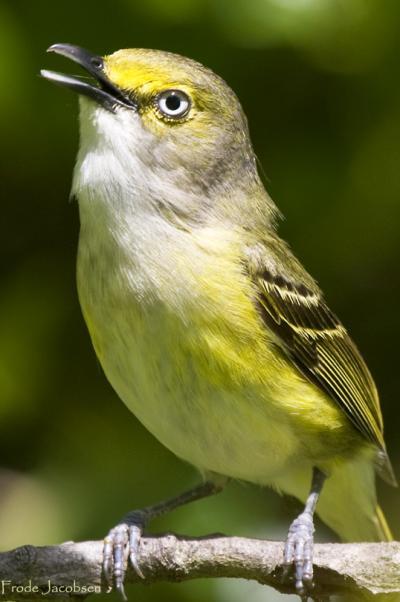Evolutionary biologists have long considered bird song to be an exclusively male trait, resulting from sexual selection. A new paper says that's not the whole story.
The results of their analysis, now published in Nature Communications, showed that the common ancestor of modern songbirds had female song.
It doesn't turn Darwin's theory of sexual selection on its head, but it does mean there is more to the story than what Darwin proposed. Sexual selection has played a major role in the evolution of elaborate bird song but other selection pressures or processes have also probably played a role, especially at the initial stages of its evolution, the authors note.
So Darwin didn't know everything in 1859. In other news, cars are also more advanced than when Henry Ford made them.
The team used information from several sources, including the Handbook of the Birds of the World. Their survey included birds from all over the globe, but focused on early-diverging Australasian lineages, which contribute strongly to what the ancestral songbird might have been like. Of the songbirds surveyed, 71% of them had female song. The researchers then mapped the traits of female song onto an evolutionary tree.

The White-eyed Vireo (Vireo griseus), pictured here singing, is a common North American songbird in which both males and females sing. Credit: Frode Jacobsen
"Darwin was from Great Britain. In the spring these brightly colored males show up, and they likely served as his primary reference point for bird song," says Karan Odom, a
University of Maryland Baltimore County
researcher and leader of the study. Both male and female birds sing year-round in many other regions, such as the tropics.
The work of Odom and her team shows that bird song did evolve in both sexes. Because song evolved in both males and females, the reasons for its initial evolution may not have only been sexual selection as proposed by Darwin, but perhaps also social selection in which both males and females may have competed for resources needed for survival and reproduction, as opposed to just "attracting mates."
Mike Webster, director of the Macaulay Library at the Cornell Lab of Ornithology, explains, "The standard thinking is that competition for mates has led to the evolution of bright colors and loud songs in males, whereas selection for avoidance of predators has led to females that are cryptically colored and relatively quiet."
"This study by Odom et al. stands this view on its head by showing that singing females are actually quite widespread, and also that females sang in the ancestor of all modern songbirds," Webster notes. "This implies that competition for mates may not be the driving force behind the origin of these elaborate vocal traits, and sends us back to the drawing board to look for answers."
Odom says this research opens the door for exploring alternative evolutionary scenarios and processes that Darwin might not have considered with regard to the evolution of bird song.






Comments